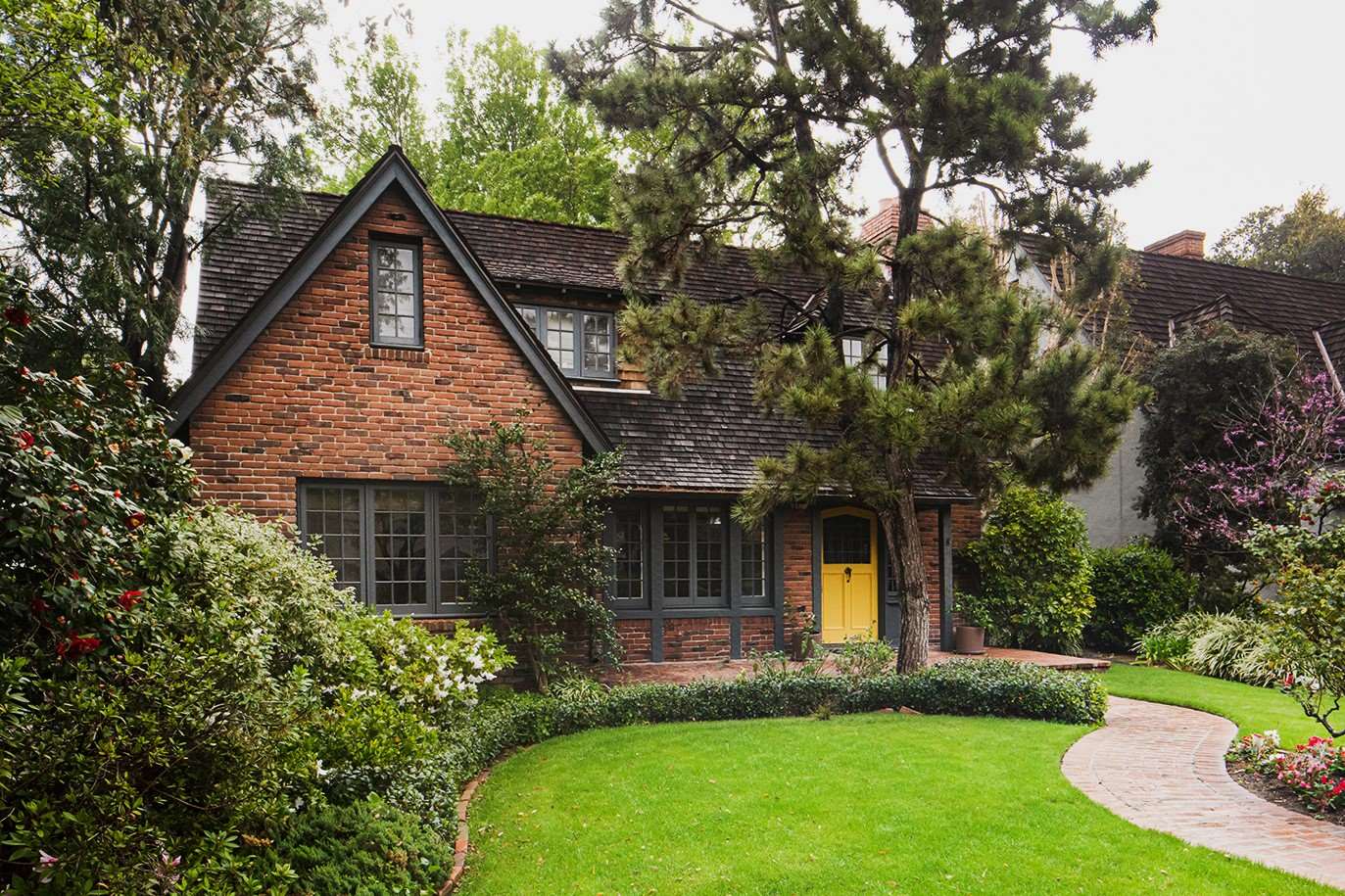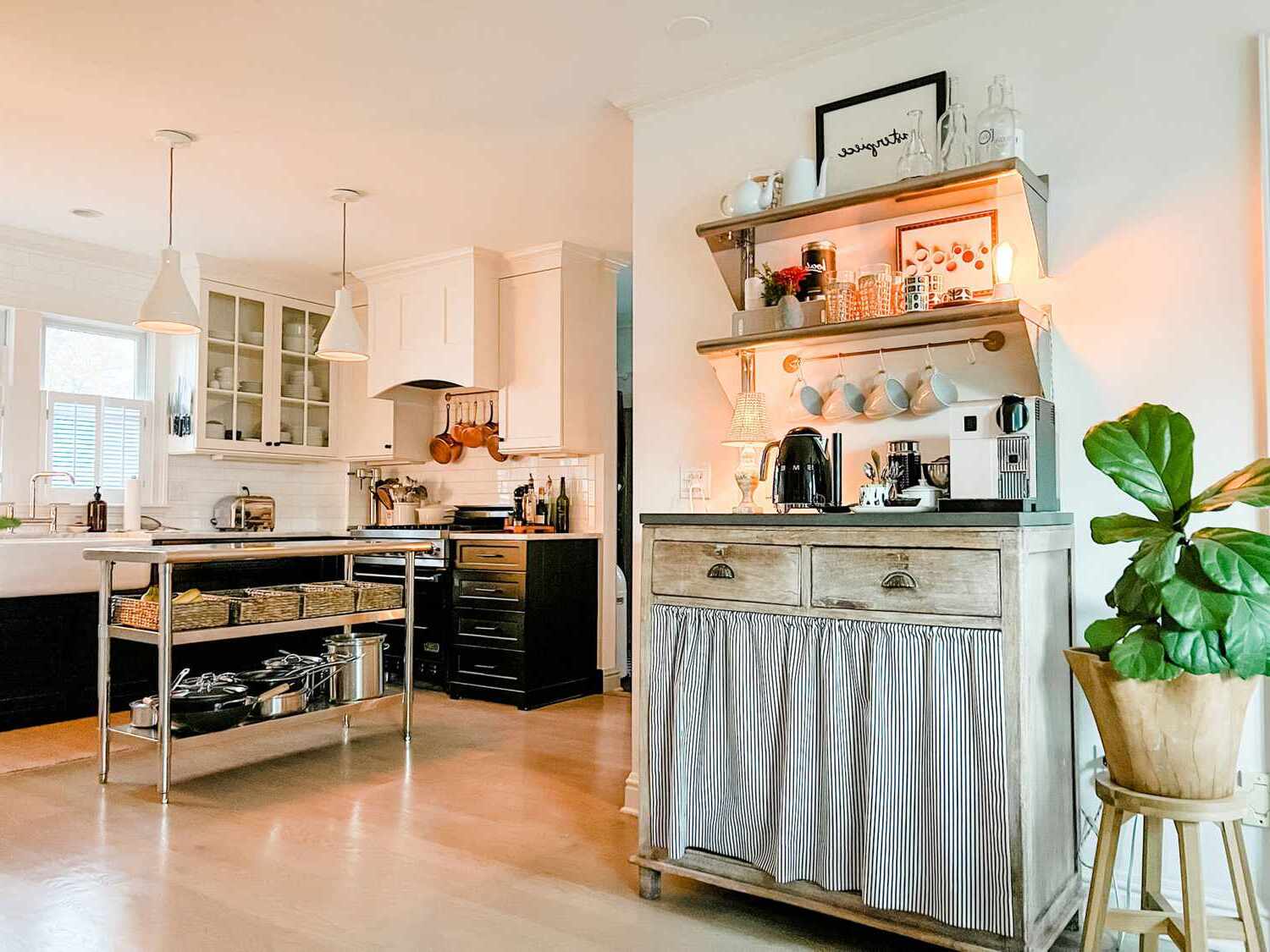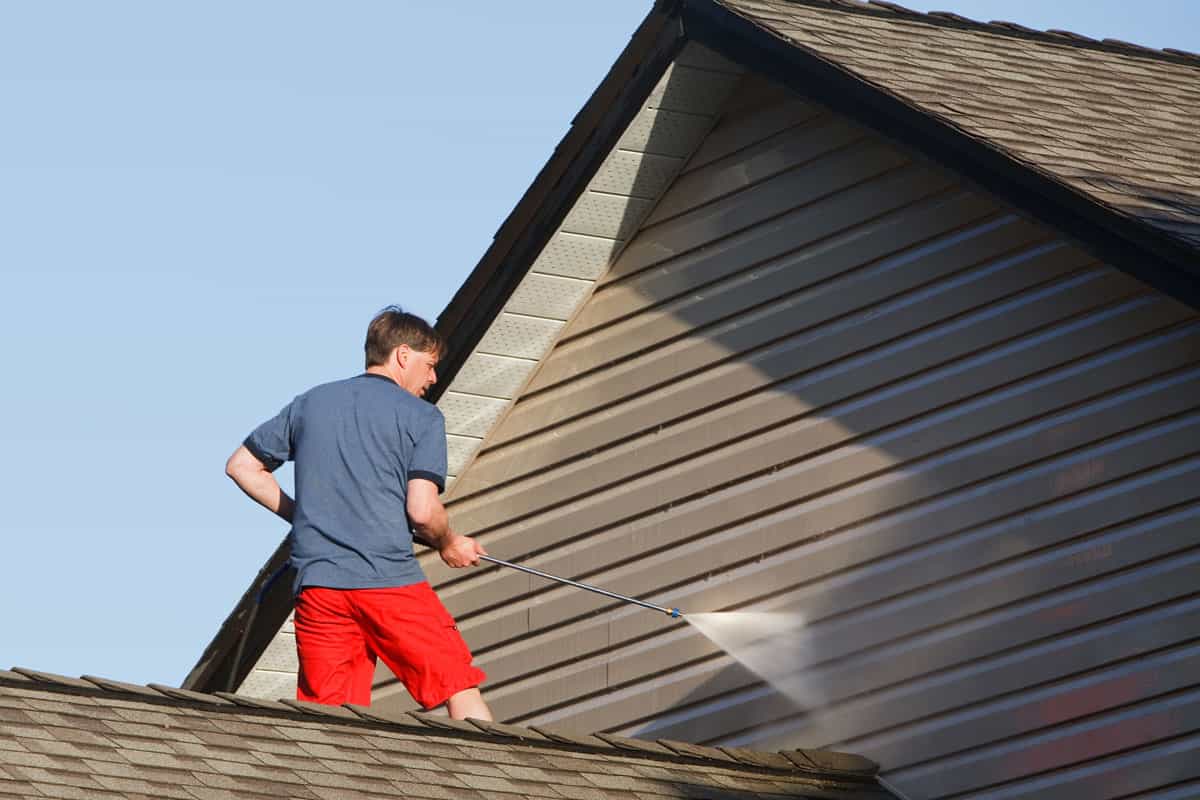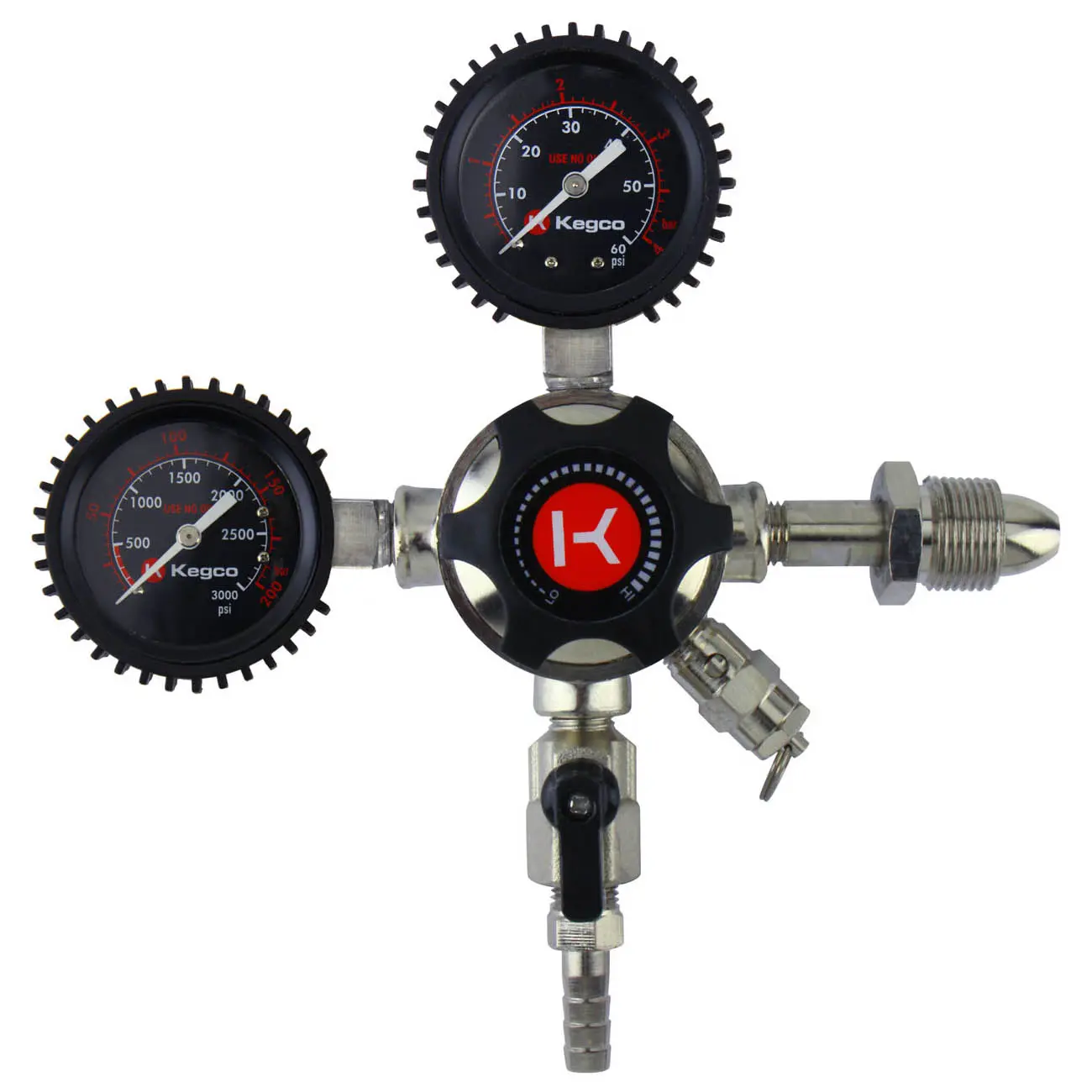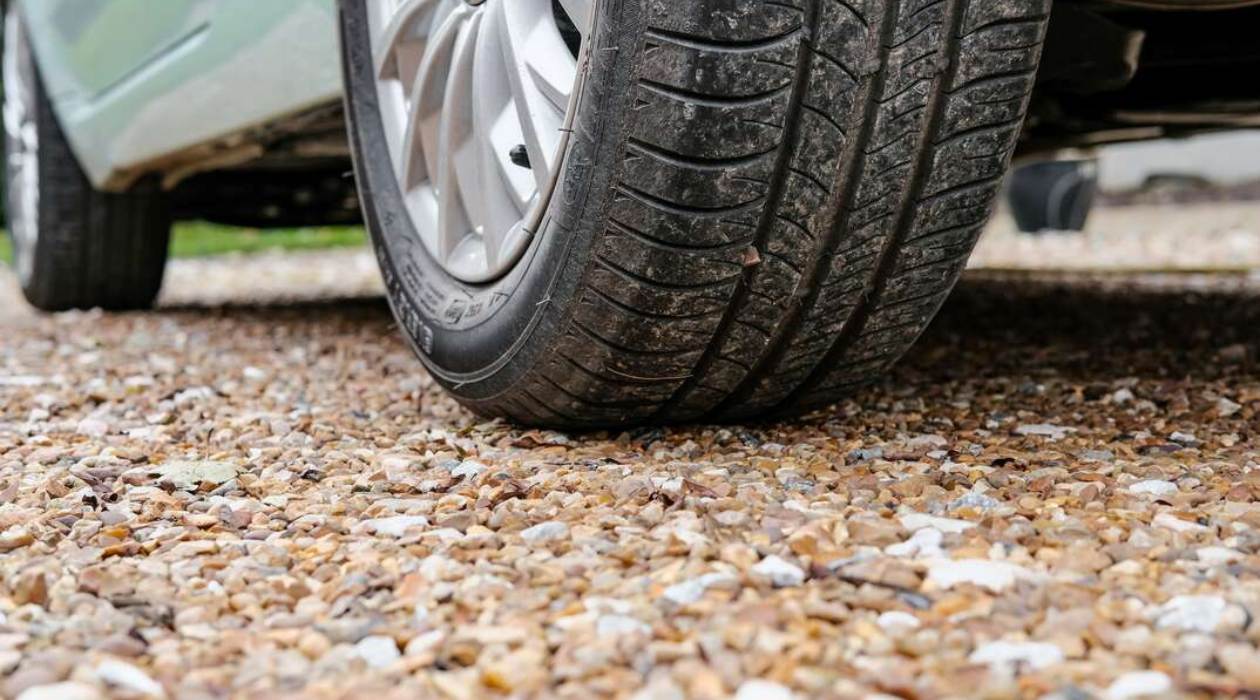Home>Home Maintenance>Dave Ramsey: How Much Budget For Home Maintenance


Home Maintenance
Dave Ramsey: How Much Budget For Home Maintenance
Modified: October 21, 2024
Learn how to budget for home maintenance with Dave Ramsey's expert tips and advice. Ensure you're financially prepared for unexpected repairs.
(Many of the links in this article redirect to a specific reviewed product. Your purchase of these products through affiliate links helps to generate commission for Storables.com, at no extra cost. Learn more)
Introduction
Welcome to the world of home maintenance! As a homeowner, you have made a significant investment in your property. Whether you have just purchased your dream home or have been living in your beloved abode for years, one thing is for sure – proper maintenance is essential to ensure your home retains its value and remains a safe haven for you and your family.
However, home maintenance can be a daunting task, both in terms of time and money. From routine upkeep to unforeseen repairs, the costs can add up quickly if not properly managed. That’s why budgeting for home maintenance is crucial.
In this article, we will explore the importance of budgeting for home maintenance and discuss the factors to consider when creating a realistic budget. We’ll also provide tips on estimating annual home maintenance costs, allocating funds for routine maintenance, setting aside funds for unexpected repairs, and strategies to save money on home maintenance.
So, grab a cup of coffee, sit back, and let’s dive into the world of home maintenance budgeting!
Key Takeaways:
- Budgeting for home maintenance is crucial to preserve your home’s value and ensure safety. It helps prevent costly repairs, enhances energy efficiency, and establishes financial preparedness for unexpected issues.
- By estimating annual maintenance costs, allocating funds for routine maintenance, and setting aside money for unexpected repairs, homeowners can ensure their homes remain in optimal condition while avoiding financial strain.
Read more: Creating A Home Theater On A Budget
Importance of Budgeting for Home Maintenance
When it comes to owning a home, budgeting for maintenance costs is often overlooked or underestimated. Many homeowners fail to realize that regular upkeep and necessary repairs are unavoidable expenses that should be factored into a comprehensive budget. Here’s why budgeting for home maintenance is so important:
- Preserving property value: Regular maintenance ensures that your home remains in optimal condition. By addressing repairs and performing routine upkeep, you can prevent minor issues from turning into major problems that could significantly impact your home’s value.
- Preventing costly repairs: Regular maintenance helps identify small issues early on before they escalate into major, costly repairs. For example, a small leak in the roof can lead to water damage and mold growth if left unattended. By addressing the issue promptly, you can save yourself from expensive repairs down the line.
- Ensuring safety and security: Maintaining your home’s structural integrity is crucial for the safety and security of your family. Regular inspections and maintenance of electrical systems, plumbing, and heating/cooling systems can help prevent accidents and ensure that your home is a safe haven for everyone.
- Enhancing energy efficiency: A well-maintained home is more energy-efficient, which means lower utility bills. Regularly servicing HVAC systems, insulating windows and doors, and fixing drafts can all contribute to reducing your energy consumption and saving money in the long run.
- Establishing financial preparedness: By budgeting for home maintenance, you create a financial cushion to handle unexpected repairs or emergencies. Having funds set aside specifically for home maintenance gives you peace of mind and prevents you from going into debt when unexpected issues arise.
Remember, home maintenance is not just about fixing things when they break; it’s about being proactive in preserving your home’s condition and value. By prioritizing and budgeting for maintenance, you can ensure that your home remains a comfortable and safe haven.
Factors to Consider When Budgeting for Home Maintenance
When it comes to budgeting for home maintenance, it’s important to consider various factors that can influence the costs involved. By taking these factors into account, you can create a more accurate and realistic budget. Here are some key factors to consider:
Age and Condition of the Home
The age and condition of your home play a significant role in determining maintenance costs. Older homes often require more frequent repairs and updates, as wear and tear are more likely to have taken a toll. Additionally, the condition of the home when you purchased it will impact how much you may need to invest in initial repairs or improvements.
Size and Complexity of the Property
The size and complexity of your property can affect maintenance costs. Larger homes typically require more materials and labor for upkeep. Similarly, if your property has unique features, such as a swimming pool or extensive landscaping, the maintenance requirements can be more involved and, consequently, more expensive.
Read more: How Much Do Budget Blinds Cost
Geographical Location
The geographical location of your home can influence both routine maintenance and unexpected repairs. Different climates and regional factors can impact the wear and tear on various aspects of your home, such as the roof, foundation, and exterior materials. For example, homes in areas prone to severe weather or high humidity may require more frequent inspections and repairs.
Average Costs for Services in Your Area
It’s essential to research the average costs for home maintenance services in your area. Prices can vary widely, so understanding the local market rates will help you budget more accurately. Consider reaching out to local contractors or seeking quotes for specific services to get a better idea of the costs involved.
Age and Condition of Appliances and Systems
Your home’s appliances, systems, and equipment, such as HVAC systems, water heaters, and kitchen appliances, have a lifespan and may require repairs or replacement at some point. Understanding the age and condition of these items can help you anticipate future maintenance costs and plan accordingly.
Prioritizing Maintenance Needs
Not all maintenance tasks are created equal, and some may require more immediate attention than others. It’s crucial to prioritize maintenance needs based on safety, functionality, and potential long-term consequences. By addressing urgent and essential repairs first, you can allocate your budget to the most critical areas.
By considering these factors when budgeting for home maintenance, you can create a comprehensive plan that provides a more accurate representation of your annual maintenance costs. This will help you avoid any surprise expenses and ensure that your home remains in optimal condition.
Read more: How To Create A Home Gym On A Budget
Estimating Annual Home Maintenance Costs
Estimating annual home maintenance costs can be challenging, as the expenses can vary depending on various factors. However, having a rough estimate can help you set a realistic budget and avoid any financial surprises. Here are some steps to help you estimate your annual home maintenance costs:
Review Historical Costs
If you have owned your home for a few years, review past maintenance expenses to get an idea of the average amount spent annually. Look at receipts, invoices, and records of repairs or service calls. This can provide a baseline for estimating future costs.
Consider General Maintenance Tasks
Think about the routine maintenance tasks that need to be performed on an annual basis. This may include tasks such as gutter cleaning, HVAC system servicing, pest control, and landscaping maintenance. Research the average costs for these tasks in your area and factor them into your budget.
Account for Seasonal Maintenance
Take into account seasonal maintenance tasks that are specific to your home and climate. For example, if you live in an area with harsh winters, you may need to budget for snow removal, salting driveways, and winterizing your plumbing. Consider these tasks and research the associated costs.
Read more: How To Update Home Decor On A Budget
Plan for Major Upkeep and Repairs
Over time, certain components of your home will require major upkeep or repairs. This could include roof replacement, repainting the exterior, or replacing appliances. Research the average lifespan of these items and estimate the costs of their replacement or repairs. Divide the estimated cost by the expected lifespan to account for these expenses annually.
Factor in Emergency Repairs
Unforeseen emergencies can happen at any time. It’s important to set aside a portion of your budget for emergency repairs. Experts recommend allocating around 1% to 3% of your home’s value for emergency repairs each year. This can provide a safety net for unexpected situations.
Calculate and Adjust Accordingly
Add up all the estimated costs from the previous steps to get a rough estimate of your annual home maintenance expenses. Keep in mind that this is just an estimate, and actual costs may vary. Adjust the total amount based on your specific circumstances, the age and condition of your home, and any additional factors unique to your situation.
By estimating your annual home maintenance costs, you can create a budget that allows you to set aside funds for regular upkeep and be prepared for any unexpected repairs. Remember to regularly review and adjust your budget as needed to ensure you’re adequately prepared for the maintenance needs of your home.
Allocating Funds for Routine Maintenance
Routine maintenance is an essential part of homeownership, as it helps keep your home in good condition and prevents minor issues from turning into costly repairs. To ensure you have enough funds for routine maintenance, it’s important to allocate a portion of your budget specifically for this purpose. Here’s how you can effectively allocate funds for routine maintenance:
Read more: Tips For A Backyard Makeover On A Budget
Create a Separate Maintenance Fund
To ensure you have enough money set aside for routine maintenance, create a separate savings fund specifically for this purpose. Designate a certain percentage of your income to contribute to this fund each month. This will help you build up a reserve that can be used for routine maintenance tasks as they arise.
Estimate Annual Maintenance Costs
Estimate the total amount you will need for routine maintenance over the course of a year. Consider the average costs for tasks such as HVAC servicing, plumbing inspections, gutter cleaning, and landscaping maintenance. Research the costs specific to your area and consult with professionals if needed.
Break Down the Costs
Once you have an estimated annual maintenance cost, break it down into monthly or quarterly amounts. This will make it easier to allocate funds consistently throughout the year. For example, if your estimated annual maintenance cost is $2,400, you could allocate $200 per month or $600 per quarter.
Adjust Based on Priority and Season
Some routine maintenance tasks may be more urgent or seasonally dependent. Prioritize these tasks within your budget and adjust the allocation of funds accordingly. For example, allocate a larger amount in the fall for gutter cleaning and winterizing your home, or allocate more in the spring for landscaping maintenance and exterior upkeep.
Use Automatic Savings Accounts
Consider setting up automatic transfers from your main bank account to your maintenance fund. This will ensure that you consistently contribute to the fund without having to remember to transfer the money yourself. It’s a convenient and efficient way to build up your maintenance fund over time.
Monitor and Adjust as Needed
Regularly review your maintenance fund and assess if the allocated amount is sufficient. If you find that you consistently have more or less than needed for routine maintenance, adjust the monthly or quarterly contribution accordingly. Additionally, if you encounter unexpected expenses or changes in your home’s maintenance needs, be prepared to adapt and adjust your budget as needed.
By allocating funds specifically for routine maintenance, you can ensure that you have the financial resources to keep your home in good condition and prevent small issues from becoming major repairs. With a dedicated maintenance fund, you’ll have peace of mind knowing you’re financially prepared to take care of your home’s routine upkeep.
Setting Aside Funds for Unexpected Repairs
When it comes to homeownership, unexpected repairs are bound to happen. Whether it’s a burst pipe, a faulty electrical system, or a leaky roof, these unforeseen repairs can put a strain on your budget if you’re not financially prepared. That’s why it’s crucial to set aside funds specifically for unexpected repairs. Here’s how you can do it:
Create an Emergency Repair Fund
Start by creating a separate savings account or fund dedicated to emergency repairs. This account should be easily accessible and reserved solely for unexpected repairs. Having a designated fund will prevent you from dipping into your regular savings or going into debt when emergencies occur.
Read more: How Much Does A Budget Blinds Franchise Make
Calculate a Target Amount
Calculate a target amount to have in your emergency repair fund. Financial experts recommend aiming for 3% to 5% of your home’s value as a general guideline. However, depending on the age and condition of your home, you may choose to adjust this amount accordingly. For older homes or homes in areas prone to specific issues, you may want to aim for a higher target amount.
Set a Realistic Savings Goal
Determine a savings goal and break it down into achievable milestones. For example, if your target amount is $10,000, you can aim to save $1,000 per year or approximately $83 per month. By setting a realistic savings goal, you can steadily build up your emergency repair fund over time.
Automate Your Savings
Automate your savings by setting up automatic transfers to your emergency repair fund. Schedule regular contributions from your primary bank account to ensure consistent and disciplined saving. Treating this savings goal like any other bill will help you prioritize and build up your emergency repair fund without even thinking about it.
Replenish After Each Use
If you ever have to dip into your emergency repair fund to cover unexpected repairs, make it a priority to replenish the funds as soon as possible. Adjust your savings plan to contribute more until you’ve reached your target amount again. This way, you’ll be ready for the next unexpected repair that comes your way.
Adjust Based on Home Updates or Condition
As your home ages or undergoes updates, reassess your target amount and adjust it accordingly. If you’ve recently replaced your HVAC system or renovated your kitchen, the potential for unexpected repairs may be reduced. On the other hand, if your home is older or nearing the end of its useful life for major components, you may want to increase your target amount.
By setting aside funds specifically for unexpected repairs, you can alleviate the financial stress of unforeseen issues that can arise as a homeowner. Having an emergency repair fund provides peace of mind, ensuring that you are prepared to handle unexpected expenses without jeopardizing your budget or financial stability.
Strategies to Save Money on Home Maintenance
Home maintenance is an essential part of caring for your property, but it doesn’t have to break the bank. By implementing the right strategies, you can save money on home maintenance without compromising the quality or upkeep of your home. Here are some effective strategies to help you save money:
Perform Regular DIY Maintenance
One of the best ways to save money on home maintenance is by tackling routine tasks yourself. From basic plumbing repairs to painting and simple electrical work, there are numerous resources available to guide you through DIY projects. By investing a little time and effort, you can significantly reduce labor costs associated with hiring professionals for every task.
Research and Compare Prices
Before hiring a contractor or purchasing any materials or supplies, take the time to research and compare prices. Obtain quotes from multiple trusted service providers for larger projects and research online for the best deals on materials. Be sure to consider the quality of the products and services as well, as opting for the cheapest option may end up costing you more in the long run.
Regularly Maintain and Clean Your Home
Regular maintenance and cleaning can help prevent costly repairs and prolong the lifespan of your home’s components. Clean gutters and downspouts to avoid water damage, regularly clean and replace HVAC filters to maintain efficiency, and keep your home clean and well-maintained to prevent issues caused by neglect. By staying proactive, you can minimize the need for major repairs.
Learn Basic Home Repair Skills
Expanding your skill set by learning basic home repair skills can help you save money in the long run. Take the time to learn how to fix leaky faucets, patch small holes in walls, replace light fixtures, and perform other common repairs. Not only will this save you money on labor costs, but it will also give you a sense of accomplishment and empowerment as a homeowner.
Properly Maintain Appliances and Equipment
Regularly maintaining and servicing your appliances and equipment can help extend their lifespan and prevent costly repairs or replacements. Follow the manufacturer’s instructions for maintenance tasks such as cleaning filters, lubrication, and tune-ups. By properly caring for these items, you can save money on repairs or premature replacements.
Invest in Energy Efficiency
Energy-efficient upgrades can save you money on both home maintenance and utility bills. Install LED light bulbs, upgrade to energy-efficient appliances, and improve insulation and weather sealing to reduce energy consumption and lower your overall expenses. These upgrades may require an initial investment but will result in long-term savings.
Read more: How Much Is A Concrete Driveway
Join a Home Maintenance Membership or Club
Consider joining a home maintenance membership or club that offers discounts on services and materials. These programs often have partnerships with local service providers, allowing you to access discounted rates. Additionally, some memberships offer regular inspections and maintenance as part of the package, reducing the need for costly repairs down the line.
By implementing these strategies, you can save money on home maintenance without compromising the quality and upkeep of your home. With a bit of research, proactive maintenance, and the willingness to learn new skills, you can keep your home in excellent condition while keeping more money in your pocket.
Conclusion
Budgeting for home maintenance is not just a financial responsibility—it’s a proactive approach to preserving the value, safety, and functionality of your home. By allocating funds for routine maintenance and setting aside money for unexpected repairs, you are ensuring that your home remains in optimal condition while avoiding any financial strain that may arise from unforeseen expenses.
Throughout this article, we have explored the importance of budgeting for home maintenance and discussed the various factors to consider when creating a budget. We have also provided tips for estimating annual maintenance costs, allocating funds for routine maintenance, setting aside funds for unexpected repairs, and strategies to save money on home maintenance.
Remember, maintaining your home is an ongoing process, and it requires both financial planning and proactive efforts. By staying on top of routine maintenance tasks, performing DIY repairs when possible, and properly caring for your home’s systems and equipment, you can minimize the need for expensive repairs and replacements in the future.
Additionally, don’t forget to regularly review and adjust your budget as needed. As your home ages or undergoes changes, your maintenance needs and expenses may evolve as well. Stay proactive in researching average costs, obtaining multiple quotes, learning basic repair skills, and exploring energy-efficient options to save money on both maintenance and utility bills.
By taking a comprehensive and proactive approach to home maintenance budgeting, you are safeguarding your investment and ensuring a comfortable and safe living environment for you and your loved ones. So, embrace the responsibility of homeownership, set a realistic budget, and enjoy the peace of mind that comes with knowing you’re financially prepared for all aspects of home maintenance.
Frequently Asked Questions about Dave Ramsey: How Much Budget For Home Maintenance
Was this page helpful?
At Storables.com, we guarantee accurate and reliable information. Our content, validated by Expert Board Contributors, is crafted following stringent Editorial Policies. We're committed to providing you with well-researched, expert-backed insights for all your informational needs.
